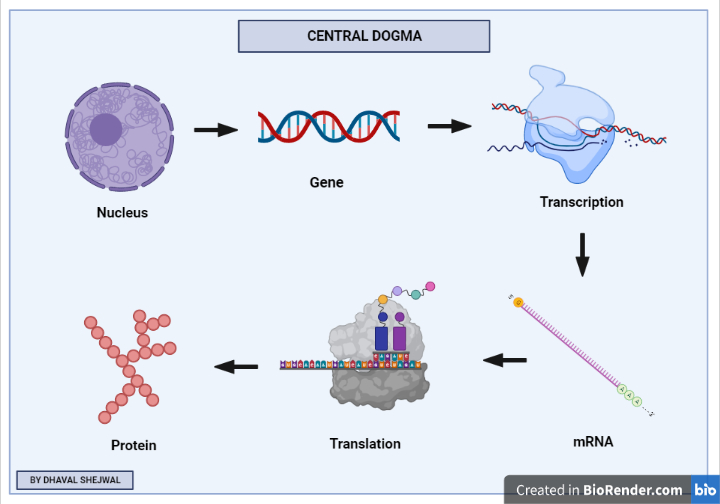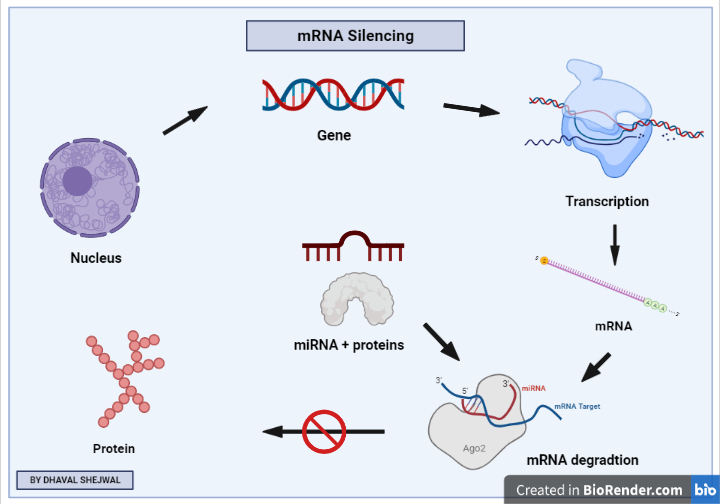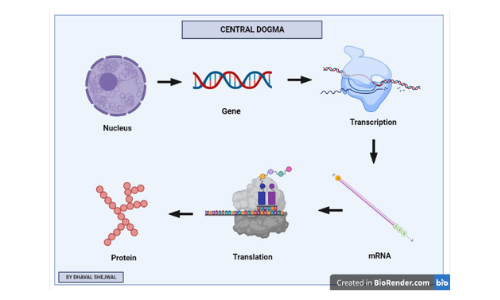All of us are products of our genes. Our genes sing melodies in the form of proteins and biomolecules to create beings like bacteria, fungi and ourselves. The various voices of our genes, the mRNAs, which help make proteins in cells, are produced in the right amount to create the symphony of life. Too much or too little, and the melody turn into noise creating chaos in the cell. To ensure that the music continues, microRNAs nicknamed miRNAs clings to improper mRNAs, not letting them make any sound. As a result, the mRNAs get degraded or aren’t translated into the sound they are to make. Thus, these mi RNAs snatch the mRNAs of genes away and silence them. This silence ensures smooth functioning of our cells, but sometimes our miRNAs are misled, and instead of helping, they start silencing important genes, and promote the voices of evil, which eventually leads to the emperor of all maladies – Cancer.

miRNAs are RNAs that don’t form proteins. Their dysregulation is a major cause of cancer. When present in an unnecessarily high amount; miRNAs can act as oncogenes, which are genes that can cause the growth of cancerous cells, or they suppress genes and proteins which prevent cancer. Due to the close relationship that miRNA and caner share, miRNAs have been used to diagnose cancer. Our body has multiple miRNAs working constantly to silence genes. To find out the find different miRNAs found in a tissue or organ, we perform miRNA Profiling, where the miRNA from a tissue is extracted and analyzed. Think of these profiles like different flavors of ice cream. All ice creams have some common ingredients such as milk and sugar, but vary in the flavoring component. The organs and tissues in body also share some miRNAs but at the same time have certain miRNAs unique to them. The amount of the different miRNAs is also different, where in some organs one miRNA may be more whereas in another organ, the same miRNA may be less in number. The comparison of the different profiles helps us in the diagnosis, since tissues with tumors and those without them show different miRNA profiles. In cancer, the miRNAs are dysregulated, meaning that some miRNAs are way more or less in number i.e., some are overexpressed or some are under–expressed respectively. These differences can be seen in the miRNA profiles. MiRNAs have successfully allowed us to differentiate between pancreatic cancer and normal pancreatic tissue, which is remarkable since pancreatic cancer is a lethal disease.

Since the number of miRNAs in a tissue are many (about thousands) it’s a cumbersome. and costly task to obtain the entire profile for a person who needs to be diagnosed. Instead, if we knew which miRNAs were over or under expressed in a certain type of cancer, we can test for only that miRNA. Such a test will let us know if a person has cancer, and also tell us the type cancer they have. Going back to our ice cream analogy, we can say which one is chocolate and vanilla just by looking at the ice cream or tasting it, instead of finding out every ingredient used. Hence miRNAs can also serve as effective biomarkers (A biological molecule found in blood, other body fluids which is a sign of a disease) for cancer. In breast cancer, miR-21 and miR-145 (Since there are thousands of miRNAs, we number them for identification) were able to distinguish between normal and cancerous tissue making them available for usage as biomarkers. miRNAs are also found in our blood and can be directly measured from a patient’s blood sample. People with cancer show different levels of miRNAs in blood as well compared to healthy individuals. This increases the value of them as a biomarker since we can test for cancer using blood samples instead of using invasive procedures such as biopsies.
The future of miRNAs in diagnosis is being explored as more avenues are being tested. However, these tiny molecules are also being studied as they have immense potential for cancer therapy and cure. Studies in mice have shown that supplying tumors with miRNAs that control cell growth reduces the tumor. miRNAs can be used to silence genes which are known to promote cancer. Cancerous tissues where certain miRNAs are under expressed can be supplied with those miRNAs as a cure. Since miRNAs are biological molecules from our very own body, they are indeed less toxic than chemotherapy or other cures of cancer we see today. While the research is ongoing, the eternal tango of miRNA and cancer doesn’t seem to end anytime soon. miRNAs can act as both a soldier (as a means of cure) or spy (as a means of diagnosis) or the enemy itself (by dysregulation).
The role it plays in our bodies however, is nature’s game.
References:
. . .
Writer
Jwalanthi Sundaram
Editor
Thara Bastian Antony

